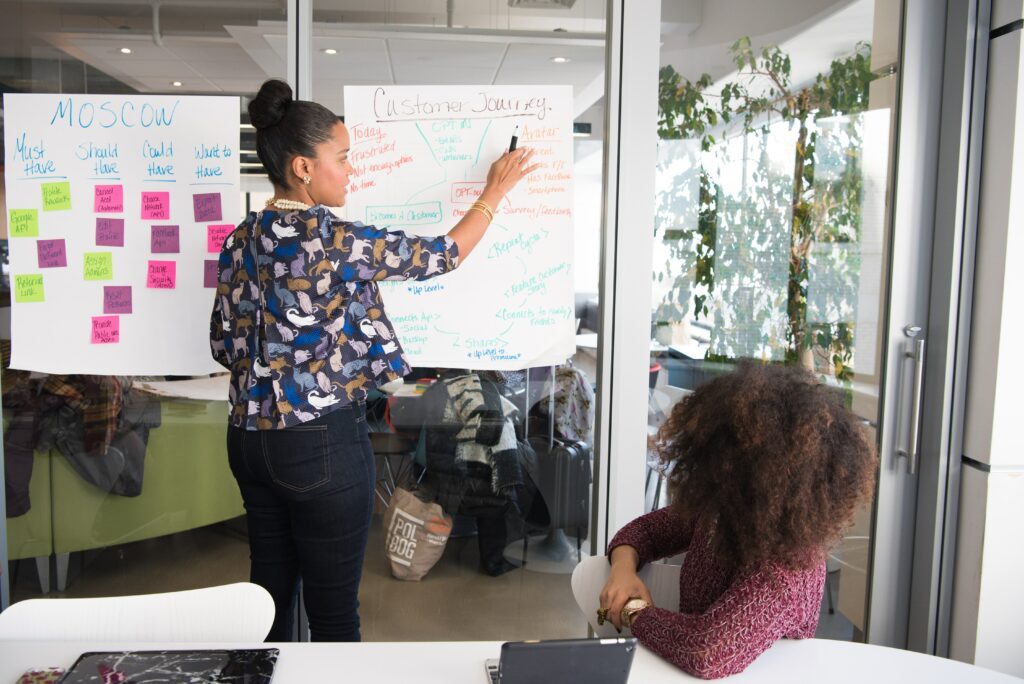How to implement a QWL approach?
The QWL approach has a clear objective: to improve working conditions. The phenomenon of post-covid resignation and the boom in absenteeism are not insignificant. It’s time to give way to a management style based on trust and listening. The QWL policy should be your guide. How? We’ll provide you with explanations and examples of actions you can take to improve your employees’ quality of life.

How can we improve quality of life at work?
What is well-being at work? Can we contribute to employees’ quality of life and the company’s performance at the same time? Yes, because today we know that one can’t exist without the other. This subject is even of interest to academic research. For Dr. F. Rosenfeld, well-being at work is defined as :
“All factors concerning the conditions in which work is carried out: safety at work, protection of the worker’s health, the psychosocial load caused by work (stress), workplace hygiene, ergonomics, beautification of the workplace, and environmental measures taken by the company”.
It’s a human-centered approach that places a great deal of responsibility on managers and HR. So, to meet this challenge, your QWL approach should be structured around 4 stages:
- Organize the action by defining the current issues;
- Prioritize and prepare solutions ;
- Test and evaluate a new organization ;
- Renew your QWL approach.
Now let’s take a look at how to put this QWL approach into practice.
How do you define your company's current issues?
As an HR manager, you’re more likely to be asked to assess employee satisfaction and prevent occupational hazards. To do this, you have 3 tools at your disposal.
1- Social Perspectives Management (GPS)
It takes the form of a pre-existing questionnaire. It covers the main QWL themes. GPS will guide you through the issues you need to prioritize within your organization.
The QWL questionnaire
In addition, you can create a customized QWL questionnaire. In this way, you’ll be able to incorporate questions specific to your business.
Individual interviews
Individual exchanges are experienced as privileged moments by employees. They are therefore to be encouraged. The interview gives employees the opportunity to clearly express their personal feelings and expectations.
Whatever the methodology, the most important thing is to :
- Recognizing the singularity of experiences ;
- Identify the pluses and minuses of the current period;
- Understand the experience of each individual and their decisions, which may sometimes have been misunderstood.
Renewing these surveys provides an opportunity to test new habits and adjust them over time.
How to create a QWL initiative following analysis?
Identifying employee expectations is the first step in your QWL approach. Now you need to prioritize and plan actions.
Prioritizing issues
The diagnosis should help you to determine the priority topics on which the players concerned need to work. This prioritization can vary greatly from one department to another. The choice of actions to be taken must be debated and agreed by all stakeholders. Without this, the approach would be in jeopardy, since expectations will certainly be different. Indicators alone are not enough: we need to engage in dialogue before taking action.
Action planning
Improving the social climate, developing management… your actions will have many objectives. You’ll need to plan solutions in project mode. At the time of experimentation, you’ll need to analyze and evaluate the results of the actions implemented.
Examples of actions to improve the quality and conditions of life at work
You should bear in mind that the QWL action experiment aims to explore new avenues. It’s a phase of finding and building solutions through practice. To inspire you, here are a few examples of actions to test as part of a QWL approach:
- Create an extra room for employees to relax;
- Set up team building activities;
- Flexible working hours for certain positions;
- Plan new training courses;
- Optimize workspaces to facilitate collaboration…
Solutions vary according to analysis and discussion, but certain expectations are common. For example, the main factors of well-being at work are :
- Recognition;
- Job flexibility and adaptability;
- Physical environment ;
- The type of work.
These axes can also serve as a model for structuring your QWL approach.
Follow up on actions
Once you’ve identified, prioritized and tested different actions, you need to evaluate the results. The best way to do this is to cross-reference your initial indicators with a new QWL study.
Thanks to a complete digitalization of this process, QuarksUp helps you monitor and manage your QWL approach. We base our indicators on the 7 categories recommended by ANACT (Agence Nationale pour l’Amélioration des Conditions de Travail):
- Absenteeism;
- Working conditions ;
- Demographics;
- The route ;
- Production;
- Health ;
- Safety.
If your solutions have worked, then it’s time to deploy them on a long-term basis and continue to evaluate them regularly.
Renewal of the QWL approach to improve working conditions
The QWL approach is a long-term process. You need a genuine QWL barometer that’s easy to set up. In this way, employees will have the opportunity to express their feelings frequently. Listening, dialogue, action and analysis are your weapons for ensuring employee well-being. Investing in this area is a guarantee of efficiency and performance for your company.
To sum up, here are the 3 points to bear in mind when setting up a QWL approach:
- Define problems using a diagnostic tool (GPS, QWL questionnaire, etc.);
- Prioritize and plan actions through discussions ;
- Experiment and analyze results.
This makes it easy for you to develop recurring projects to ensure a “better life at work”.
Good to know! quarksUp is an HRIS solution for managing the entire employee cycle.
Thanks to this HR tool, everything can be done online. As an HR manager, you’ll be in charge of all our employees’ digital activities. With its modular offer, quarksUp intervenes from recruitment to employee off-boarding.
You may also be interested in 😊

GPEC: Definition and implementation tools
What is GPEC (Gestion Prévisionnelle des Emplois et des Compétences) and how can it be implemented? quarksUp, expert in HRIS, answers your questions.

Annual appraisal interview: objective, grid
The annual appraisal interview is an opportunity to take stock of performance. quarksUp, expert in HRIS, guides you in preparing your objectives and evaluation grids.

